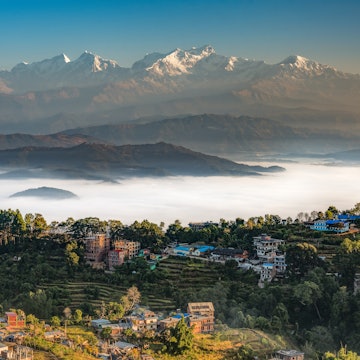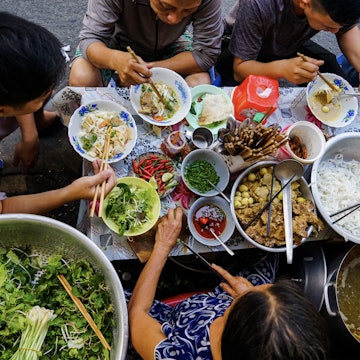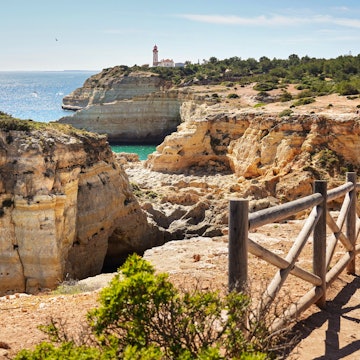

Rowing on Lake Titicaca, Peru. Jess Kraft/Shutterstock
Traveling to far-off corners of the world needn’t make you drift into insolvency. Whether you’re looking to trek in Nepal’s mountains, immerse yourself in traditional village life on Indonesia’s less-visited islands, surf in Nicaragua, attend all-night reggae fests in Jamaica, or explore the attractions of southern Spain, it’s often a matter of getting the timing right.
If you plan carefully in advance, you can make huge savings in travel costs, while wallet-friendly street food, affordable lodgings and inexpensive public transportation can make your money go further even in destinations you may not have originally thought of as budget friendly. These diverse destinations will widen your horizons without breaking the bank.

1. Mexico City, Mexico
Best for art
While much of Mexico is an excellent, wallet-friendly destination, its vibrant, vast, occasionally chaotic capital stands out for its variety of cultural, historical and edible offerings. Base yourself in Centro Histórico – the historical center – with its wealth of inexpensive guesthouses and hostels, or else arty Roma or Condesa, and make use of the city’s extensive and inexpensive metro system to get between neighborhoods.
Wandering around Centro Histórico, where you’ll find the Palacio Nacional, the cathedral, the Zócalo square and other architectural highlights, is free, as is exploring the huge Chapultepec Park. Entry to top attractions such as the Museo de Antropología e História, the Museo Frida Kahlo and the pyramids of Teotihuacán will only set you back a few pesos, while admiring murals at the Diego Rivera Mural Museum, Palacio de Bellas Artes or around Coyoacán, Roma or Condesa costs little or nothing. When you get hungry, graze on countless types of tacos, as well as quesadillas and tamales, available from street food carts all over the city.
Budget tips: Take advantage of the many free walking tours on offer to get the most out of your visit, and avoid pricey tours of the prehispanic city of Teotihuacán by taking a bus to the site from the Autobuses del Norte bus station.

2. Jamaica
Best for music and beaches
While tourism in the Caribbean as a whole is geared more towards the higher end of the market, Jamaica is somewhat of an exception: its own luxury beach resorts aside, there are plenty of inexpensive accommodations all over the island that can help you organize outings to nearby beaches, mountains, waterfalls, museums and incredible music scene on a budget.
The gritty capital of Kingston is an excellent starting point, where you can visit Bob Marley’s birthplace in Trench Town, as well as the excellent Bob Marley Museum. Use Kingston as a jumping-off point to ascend Blue Mountain Peak in the Blue Mountains, with an overnight stay in rustic guesthouses. Alternatively, base yourself in Negril on the west coast to sun yourself on the white-sand Seven Mile Beach, attend nightly music events and jump off a cliff at Rick’s Café; or else stay in a ramshackle guesthouse in laid-back Treasure Beach on the south coast and take a boat out to Pelican Bar. If you’re into roots reggae or dancehall, stay in Ocho Rios on the north coast and attend the overnight Rebel Salute, or the multiday Reggae Sumfest in Montego Bay, Jamaica’s second city. For the price of an inexpensive entry ticket, you’ll see dozens of bands and performers.
Public transportation (minibuses, shared taxis and air-conditioned buses) across the island is cheap and frequent, while eating out is inexpensive, particularly if you stick to Rasta-made I-tal (natural foods) or jerk pork and chicken from ubiquitous jerk huts.
Budget tips: To save money on international airfares, aim to travel outside the popular December to January season. Flights are cheapest during the June to November rainy/hurricane season, when brief tropical deluges are interspersed with sunshine.

3. Nicaragua
Best for outdoor adventure
Forget Costa Rica: its neighbor Nicaragua may not be as well-known a Central American getaway, but it offers a great mixture of culture and outdoor adventures, all at a fraction of the cost. The west coast is known for top surfing off the beaches of San Juan del Sur, Papoyo, Poneloya and other hot spots. Inland, Granada and León beckon with beautiful centuries-old architecture and, in León’s case, a proud history of liberalism. You can use Granada as a jumping-off point for small-island stays in the vast Lago Cocibolca, or else take a ferry from San Jorge to Isla Ometepe, renowned for its laid-back beaches and two climbable volcanoes.
Speaking of volcanoes, you can peer into the crater of the active Volcán Masaya, located halfway between Granada and Managua – the capital. Off Nicaragua’s east coast, Big Corn and Little Corn islands, fringed with white-sand beaches and ringed with coral reef, offer excellent snorkeling and diving opportunities; vehicle-free Little Corn in particular has a barefoot, chilled-out vibe.
Budget tips: Minimize costs by dining on staples like dishes like nacatamales (banana-leaf-wrapped bundles of cornmeal and meat), vigorón (yucca with fried pork skin), or indio viejo (stew) at comedores (local eateries), travel between towns using chicken buses (repurposed old school buses from the United States) and stay in hostels and inexpensive guesthouses. Accommodation costs drop during the May to October rainy season (though some places close in September and October: hurricane season).
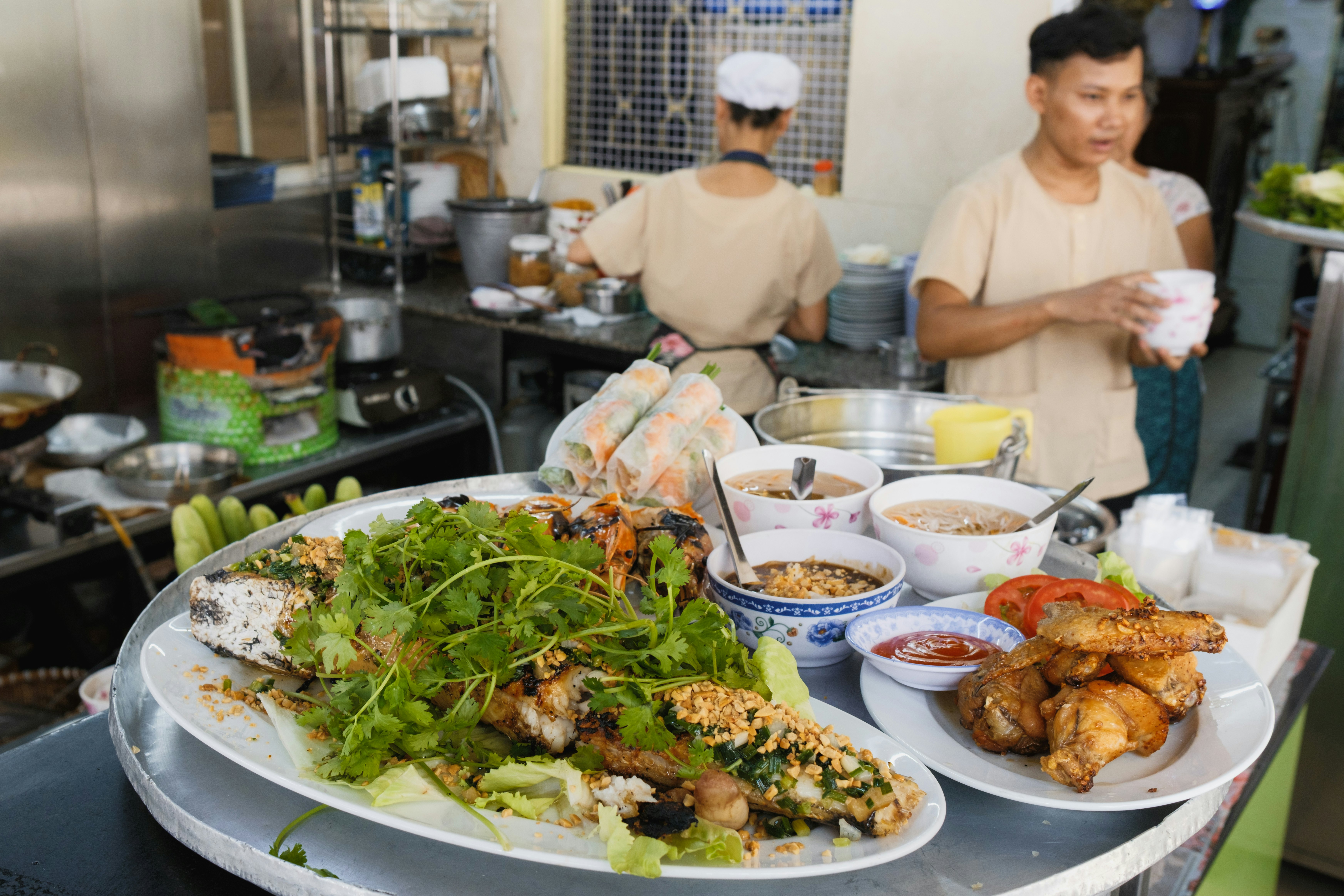
4. Vietnam
Best for street food
Fringed by a mind-boggling 4000 or so islands, Vietnam offers numerous options for wallet-friendly escapes. From the bustling capital of Hanoi with its handsome historic Old Quarter, you can make your way north to Sapa for fantastic trekking among rice terraces, overnighting in homestays in Red Dao and Hmong villages. Alternatively, explore the myriad karst islets of the UNESCO World Heritage Site of Halong Bay in a boat.
Further south, explore the Imperial City of the ancient royal capital of Hue, wander the lantern-lit streets of the beautiful riverside town of Hoi An, venture into some of the world’s biggest caves in Phong Nha-Ke Bang National Park and explore the My Son Hindu temple complex, built by the ancient Champa civilization. Hit the beaches in Danang or escape the tropical heat by heading to the hill town of Dalat and motorbiking amidst pine forests.
In the south, the War Remnants Museum of Ho Chi Minh City – Hanoi’s rival when it comes to beautiful architecture and superb dining scene – provide a sobering insight into the Vietnam War; on the outskirts, you can descend into the underground complex of Cu Chi tunnels to appreciate the ingenuity of the Viet Cong. Further south, around the Mekong Delta, lies lush land threaded through with river tributaries and rich in floating markets; exploring it by boat and bicycle is a great way of delving into local culture. The backpacker hostel scene is well developed in Vietnam and the country’s street food is second to none: bowls of pho, banh xeo pancakes, bun cha (rice noodles with pork) and other staples are filling and cost very little.
Budget tips: To save on accommodation costs, take the sleeper Reunification Express train that runs between Hanoi and Ho Chi Minh City via Hue, Danang, Hoi An and Nha Trang. Sleeper buses with two-tiered sleeping berths are another great way to get between the main visitor hot spots.

5. Lisbon, Portugal
Best for a city break
In Western Europe, Lisbon beckons with its unique melange of culture, history and excellent dining – all at lower prices than the majority of European capitals. Exploring the narrow, winding lanes of Alfama – Lisbon’s oldest neighborhood – on foot is one of the best things to do in Lisbon. Admiring the beautiful, tiled buildings and hidden courtyards costs precisely nothing; the same is true of Lisbon’s many miradouros (viewpoints), such as Miradouro da Senhora do Monte and Miradouro de Santa Catarina, where you can enjoy fantastic panoramic views of the city. Entry to Lisbon’s top historic sights, such as Torre de Belém, costs only a few euros, while a number of museums, such as the Museu Nacional do Azulejo (Tile Museum) and the Museu de Arte, Arquitetura e Tecnologia (MAAT: Museum of Art, Architecture and Technology), are free to visit on some Sundays and holidays.
Lisbon is covered by a comprehensive, inexpensive network of trams and other public transportation; instead of forking out for a tour, you can just hop aboard Tram 28 whose route winds its way through some of the city’s most scenic parts, including Graça, Baixa and Alfama.
Budget tips: Pastel de nata (custard tart) and fresh seafood are just some of the local culinary specialties that you can enjoy on a budget, while some neighborhood bars in Alfama and Bairro Alto are good spots for catching live fado performances for the price of a drink.
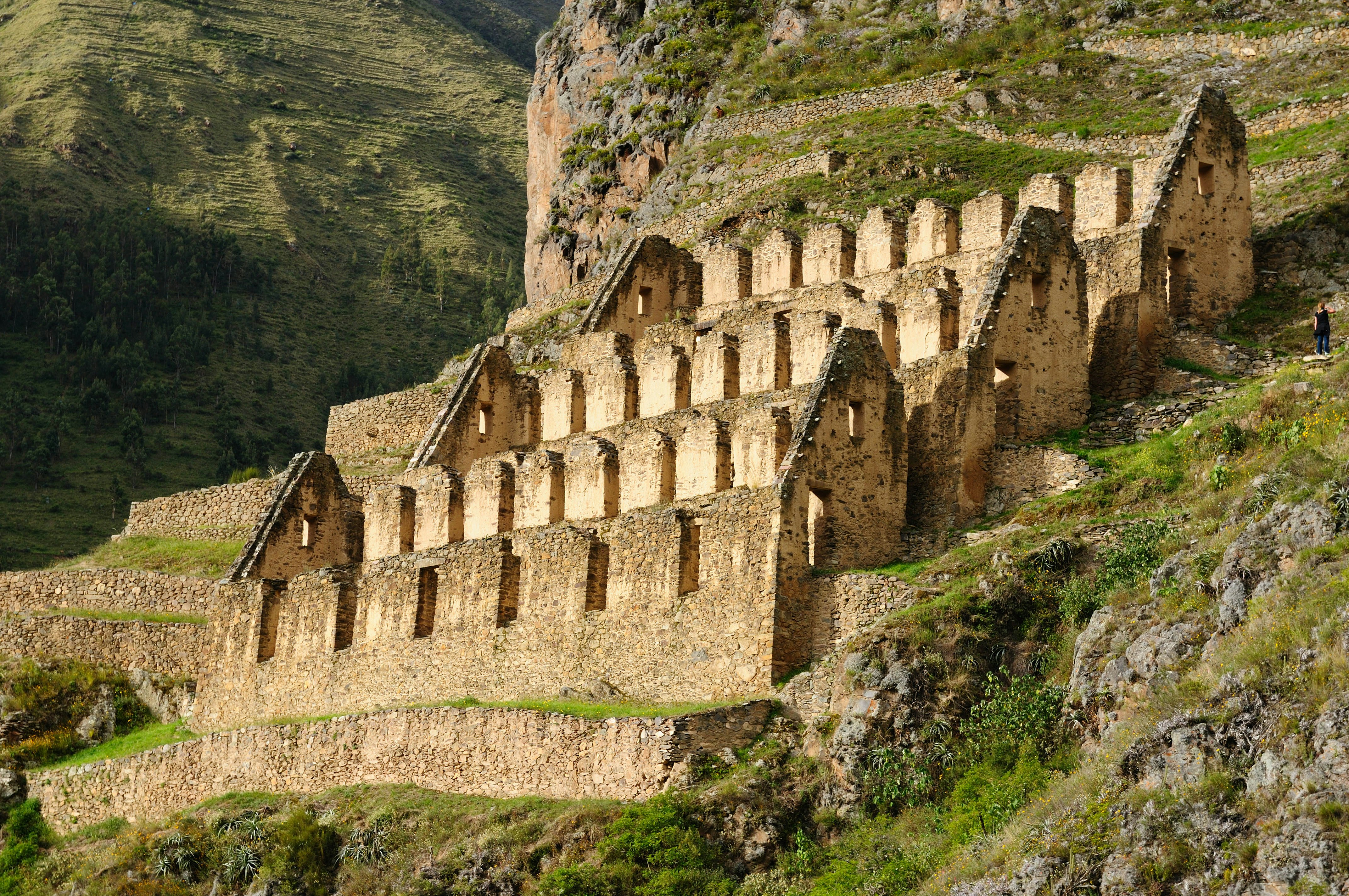
6. Peru
Best for ancient ruins
The heart of the ancient Inca empire, Peru punches above its weight when it comes to sophisticated pre-Columbian civilizations and the incredible architecture they left behind. The iconic ruins of Machu Picchu, the striking landscapes of the Sacred Valley, with its Ollantaytambo fortress and Pisac citadel, the Tucume pyramids of Chiclayo and the Chan Chan adobe fortress of Trujillo in northern Peru, as well as southern Peru’s Nazca Lines – the outlines of vast animals laid out in the desert by the ancient Nazca for purposes unknown – have been captivating archaeologists and visitors alike for generations.
Ancient remains aside, Peru captivates with the natural beauty of the high-altitude Lake Titicaca, the llama-dotted altiplano, superb trekking in the Andes and in the Cañón del Colca, and jungle lodge stays in the Amazon, reachable from Iquitos – Peru’s only city with no road access – while the bustling markets and centuries-old stone edifices of scenic Cuzco and Arequipa leave you literally breathless (though that could partly be the altitude!).
Cheap, efficient and comfortable sleeper buses make cross-country travel easy; besides the proliferation of cheap guesthouses in every major visitor hot spot, you find that your money goes a lot further than in most other South American countries, and that you can afford a stay in a boutique hotel for the price of a hostel elsewhere. Most small restaurants offer a lunchtime, fixed-price, multicourse menu del día, and you can dine on superb seafood in cevicherías (restaurants serving ceviche) in Lima and beyond for just a few soles.
Budget tips: Instead of the pricey four-day Inca Trail trek requiring mandatory guides to reach Machu Picchu, opt for the cheaper five-day Salkantay Trek to Machu Picchu, or else the four-day Lares Trek (which can be self-guided) to Ollantaytambo, from where you can take the train to Aguas Calientes, the gateway town to Machu Picchu.

7. Nepal
Best for trekking
For decades, Nepal has attracted shoestringers with its unique mix of some of the world’s best high-altitude trekking in the Himalayas, rich Buddhist culture and exuberant festivals. Kathmandu has plenty of budget lodgings, temples are free to visit, and Nepal remains one of the world’s cheapest countries to travel around, whether by shared van or internal flight.
While the world-famous long-distance hiking trails such as the Annapurna Circuit and the Lukla-Everest Base Camp route have been well and truly "discovered", with some of the teahouses en route upgraded to fancier guesthouses, there are still cheap rooms aplenty (provided you dine at the place you’re staying). Opt for the Manaslu Circuit or the Tsum Valley Trek to experience that Nepal vibe of old, with even fewer (and even cheaper) facilities. Visiting during the shoulder seasons of February to March and October to November means more savings and still decent weather for trekking and sightseeing.
Budget tips: Dal bhat (lentils with curry and rice) is ubiquitous and filling, and many eateries offer free refills.

8. Andalucía, Spain
Best all-rounder
With its combination of world-class architecture, mountain hiking, superb beaches, whitewashed villages, great dining, and year-round sunny climate, Andalucía has it all. Inland, you’ll find iconic attractions, such as Granada’s Alhambra, the Mezquita of Córdoba, Seville’s cathedral and Úbeda’s Renaissance palaces, as well as medieval lanes to explore, sun-drenched plazas to while away the time in, and flamenco bars resonating with passionate laments and staccato footwork.
Linger in the bucolic pueblos blancos (white towns) that seem to cascade down hillsides, stay in inexpensive, family-run pensiones (guesthouses) and eat cheaply and deliciously at old-school tapas bars and restaurants. If you’re a hiker, head for the Alpujarras villages in the foothills of the Sierra Nevada and use them as a base for excellent day hikes, or trek around the Sierras Subbéticas and sample some of the world’s best liquid gold at local olive oil-producing cooperatives.
On the coast, Málaga’s contemporary art galleries and Museo Picasso Málaga, Almería’s Moorish fortress and Cádiz’s Teatro Roman provide additional cultural draws, while the strings of beaches along the Costa del Sol and Costa de la Luz attract sun worshippers year-round and chiringuitos (wallet-friendly seafood restaurants) bustle with hungry diners.
Budget tips: Come early (8:30 to 9:30am) to visit Córdoba’s Mezquita for free. Many bars in Granada still offer a free tapa with your drink. Booking entry online to the Alhambra, Seville’s cathedral and Alcazar and Málaga cathedral lets you skip queues and avoid sold-out situations and inflated prices by third-party vendors.

9. Lithuania
Best for cyclists
Compact Lithuania is packed with natural beauty and cultural attractions that come at a fraction of the cost of its Western European counterparts. Wander the streets of Vilnius’s cobbled Old Town and take in its baroque architecture, summit Gediminas Hill and visit the inexpensive museums before dining out on hearty Lithuanian cuisine for a few euros; the fairy-tale Trakai Castle, surrounded by a scenic lake, is an easy day trip from the capital. Kaunas, Lithuania’s second city, features UNESCO-recognized modernist interwar architecture, excellent museums and varied dining. Near Šiauliai, the Hill of Crosses – one of Lithuania’s offbeat attractions – is free to visit.
Sticking out into the Baltic Sea, the pine-covered sliver of land that is the Curonian Spit has some excellent beaches, reachable by numerous hiking trails and cycle lanes, while Lithuania’s entire west coast is covered by the long-distance Baltic Hiking Trail, with overnight stays in wallet-friendly guesthouses en route. The traditional villages, lakes and forest of its protected areas and national parks – Aukštaitija, Žemaitija, Nemunas Delta – can easily be explored by bicycle.
Budget tips: Entry to many museums in Vilnius and beyond is free on the last Sunday of every month. Visit the Curonian Spit, Palanga and Aukštaitija National Park in May, June and September for good beach and hiking weather without the accommodation price tag of July and August.

10. Nusa Tenggara, Indonesia
Best for Indigenous culture
East of Bali, the chain of islands that make up Nusa Tenggara hits the spot when it comes to adventure, natural beauty and Indigenous culture – all at much more affordable prices than the tourist hub of Bali.
Come face to face with the world’s biggest lizard at the Komodo National Park; since numerous boat operators offer this as a day trip from Labuan Bajo, prices are very competitive, and outings include a stop at the Pink Beach. Also on the island of Flores, summiting Mt Inerie, a perfect volcanic cone, costs only a local guide’s day wages and rewards the intrepid with tremendous jungly vistas, while visiting traditional villages around Bajawa and the islands of Sumba and West Timor provides you with a fascinating immersion into indigenous culture for the price of a tiny entry donation. You can get between the main towns and villages by using super-cheap local buses, or else rent a motorbike. Accommodation all over Nusa Tenggara is cheap, especially if you opt for village homestays, while dining out at warungs (small local restaurants) and night markets also keeps costs down while letting you taste the best of local cuisine.
Budget tips: While interisland flights are not particularly pricey, you can take it slow and save a few rupiah by island-hopping using PELNI interisland ferries.






